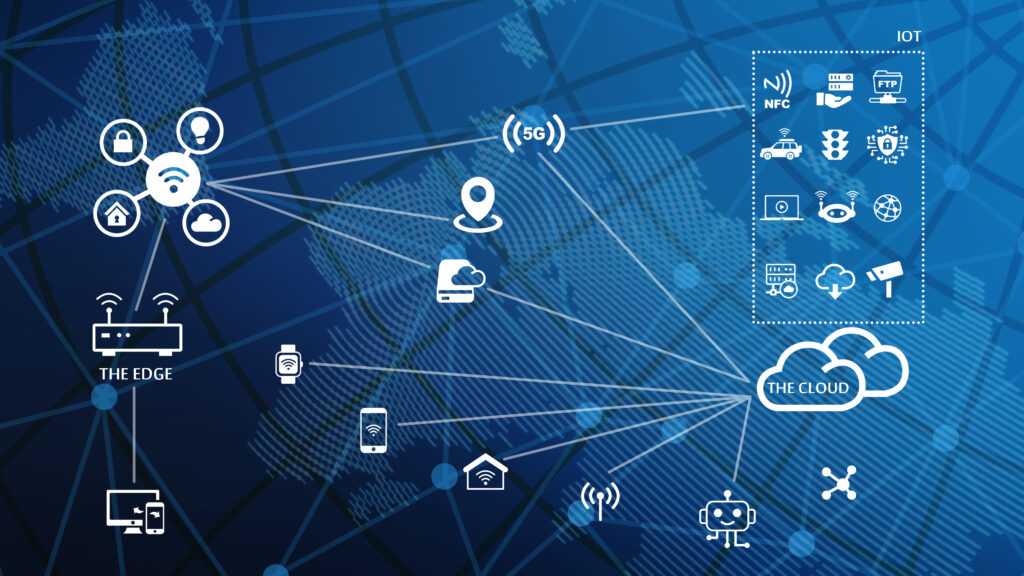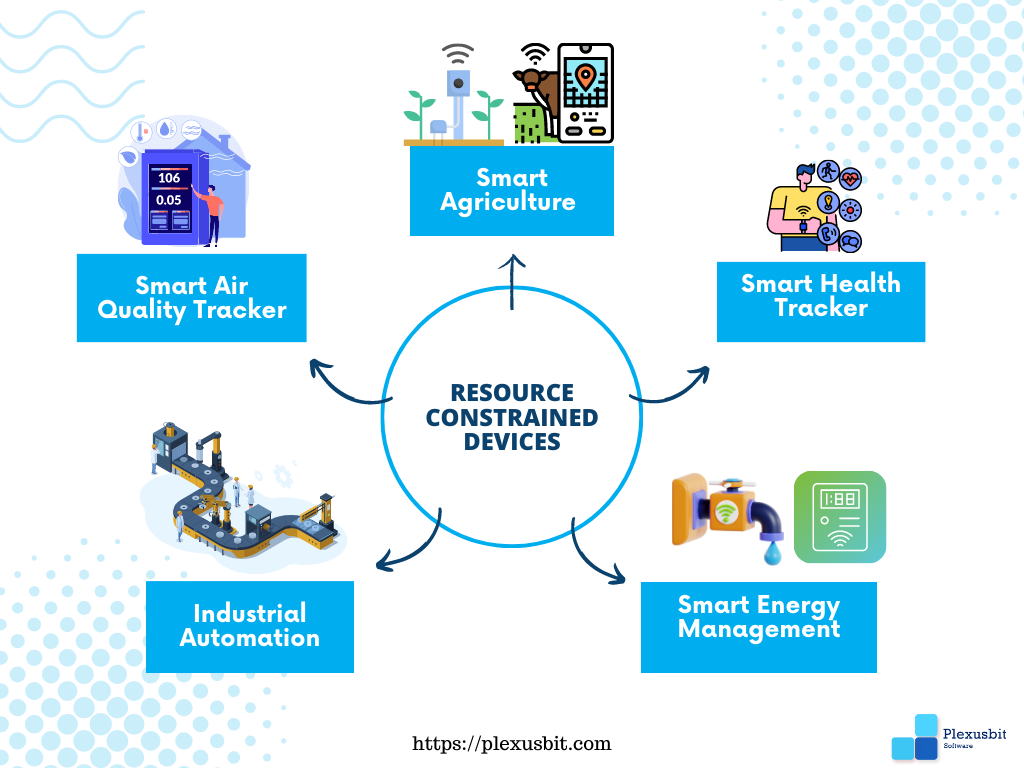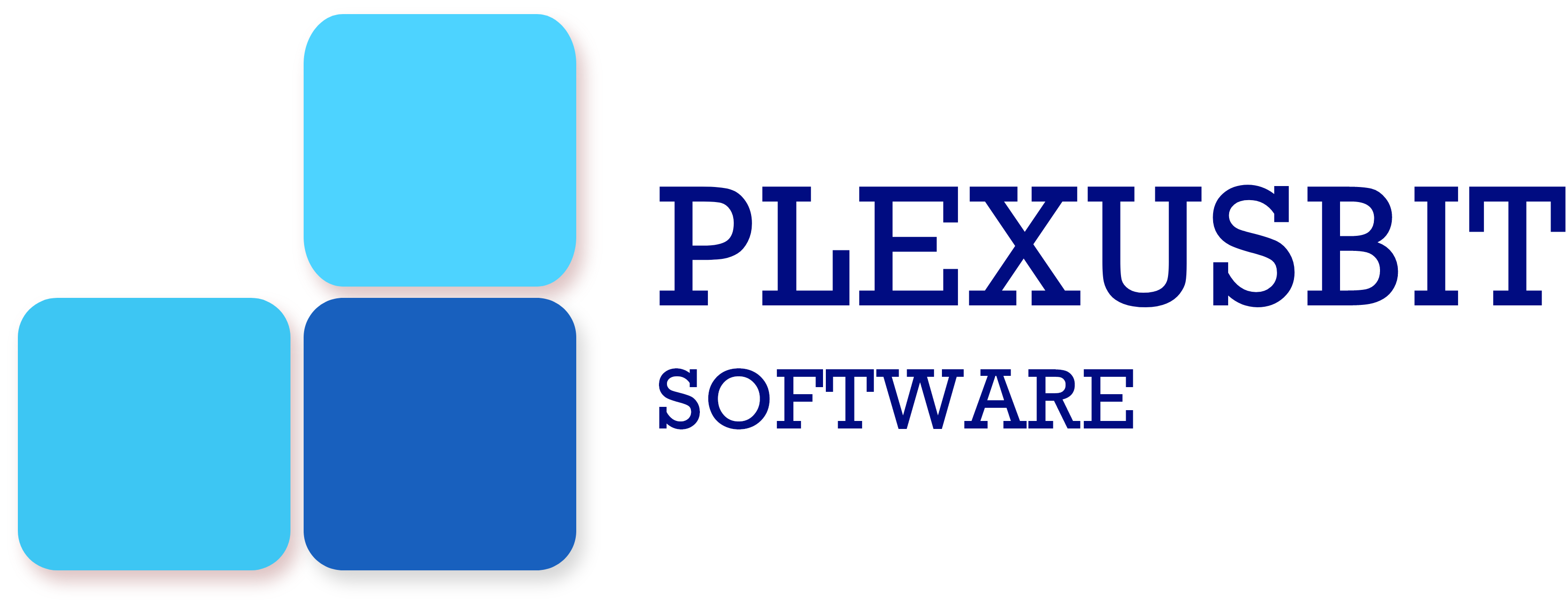
Ever wondered how amazingly a small fitness tracker that you wear on your wrist monitors your physical activity, heart rate, and also detects your sleep patterns and offers your overall health trends?
This small, lightweight thing basically collects data throughout the day and syncs it with your smartphone app for you to track your health and fitness progress. It is optimized for power consumption and works with a limited memory and processing power. While doing all this, it also maintains a slim form factor and has relatively long battery life. So, since it has “constrained resources”, it focuses on specific health-related functions rather than running complex applications.
Now Imagine a tiny device that’s placed in a potted plant to monitor the soil’s moisture levels. This device measures the moisture content in the soil and sends this information to a central system(cloud or edge device), which determines whether the plant needs water and triggers irrigation if necessary. The device is designed to perform a primary task of monitoring soil moisture, with least power consumption. It also accomplishes additional tasks like data transmission to higher-level systems. This function allows the collected data to be utilized for various purposes, such as analysis, decision-making, and remote monitoring.
In both examples, these devices are designed to excel in their specific functions while operating within strict constraints. Their resource limitations are intentional, allowing them to operate efficiently for extended periods and in various scenarios. This resource-conscious approach ensures that these devices can fulfill their roles effectively without becoming a burden on resources or energy consumption. Their ability to transmit data to other systems enables a holistic approach to managing resources, optimizing efficiency, and making informed decisions based on real-time data.
Here are some more applications of resource constrained devices:
Soil Moisture Sensor in smart agriculture: Often deployed in fields, greenhouses, and gardens to optimize water usage and enhance crop yield.
Air Quality Sensor in Environmental Monitoring: Air quality sensors measure pollutants like CO2, particulate matter, and volatile organic compounds. They are used in smart cities to provide real-time data for pollution control strategies.
Animal Tracking Tag in Wildlife Conservation: Animal tracking tags are attached to wildlife to gather data on migration patterns, behavior, and habitat use. These tags are designed for lightweight and non-intrusive monitoring.
RFID Inventory Tag in Retail: RFID tags are used for inventory tracking and management. They enable efficient supply chain operations by providing real-time visibility into stock levels.
Smart Meter in Energy Management: Smart meters monitor electricity, gas, and water usage in residential and commercial buildings. They provide real-time consumption data for better energy management.
Resource constrained devices are intentionally designed with limitations in processing power, memory, energy consumption, and often size. These limitations are not drawbacks but strategic choices that serve specific purposes within the broader IoT landscape. Their benefits include –
- Efficiency and Energy Conservation
- Cost-Effectiveness
- Specialized Functionality
- Scalability
- Reduced Maintenance
- Low Network overhead

However, their unique attributes also give rise to a distinct set of challenges that demand innovative solutions.
The Complexity Challenge
One of the primary challenges faced by resource-constrained devices is their limited processing power. Hence these devices must carefully balance their tasks to ensure efficient operation. Since complex computations are beyond their scope, it essentially impacts their ability to provide immediate insights or real-time responses.
Memory Constraints
Scarce memory capacity is another hurdle faced by these devices. Storing data, managing firmware updates, and implementing security protocols become intricate tasks when memory is at a premium. This limitation requires innovative solutions such as data compression, efficient memory management, and prioritization of critical data to ensure optimal functionality.
Energy Efficiency Dilemma
Energy efficiency is a cornerstone of resource-constrained device design. These devices often rely on batteries or low-power sources, necessitating careful energy management. Balancing the need for frequent data transmissions, processing tasks, and maintaining operational longevity presents a delicate challenge. Innovative power management techniques, like sleep modes and energy harvesting, are employed to ensure these devices can function autonomously for extended periods.
Network Limitations
Resource-constrained devices may operate in environments with intermittent or low-bandwidth network connections. This challenge impacts their ability to seamlessly communicate with other devices or central systems. Timely data transmission, essential for real-time applications, can be compromised. To address this, adaptive communication protocols and data aggregation strategies are employed to optimize network usage and ensure critical data reaches its destination.
Security Considerations
In an interconnected world, security is paramount. However, implementing robust security measures on resource-constrained devices presents a unique challenge. Their limited computational resources make tasks like encryption and authentication demanding. This vulnerability can expose these devices to potential breaches or unauthorized access. Creative solutions, such as lightweight encryption algorithms and careful risk assessment, are vital to ensuring their integration into secure IoT ecosystems.
Overcoming Challenges: Innovation and Collaboration
While resource-constrained devices face substantial challenges, innovative solutions are emerging to address these limitations. Leveraging edge computing, where processing is moved closer to the device, minimizes the burden on the device itself. Collaborative edge computing enables these devices to work together, optimizing resource utilization. Moreover, advancements in low-power communication protocols and hardware designs contribute to more energy-efficient and capable resource-constrained devices.
With a combination of creative engineering, strategic design choices, and the integration of cutting-edge technologies, the IoT community continues to pave the way for resource-constrained devices to thrive within the broader ecosystem. As these challenges are overcome, these devices are set to play an even more significant role in shaping our connected world.
